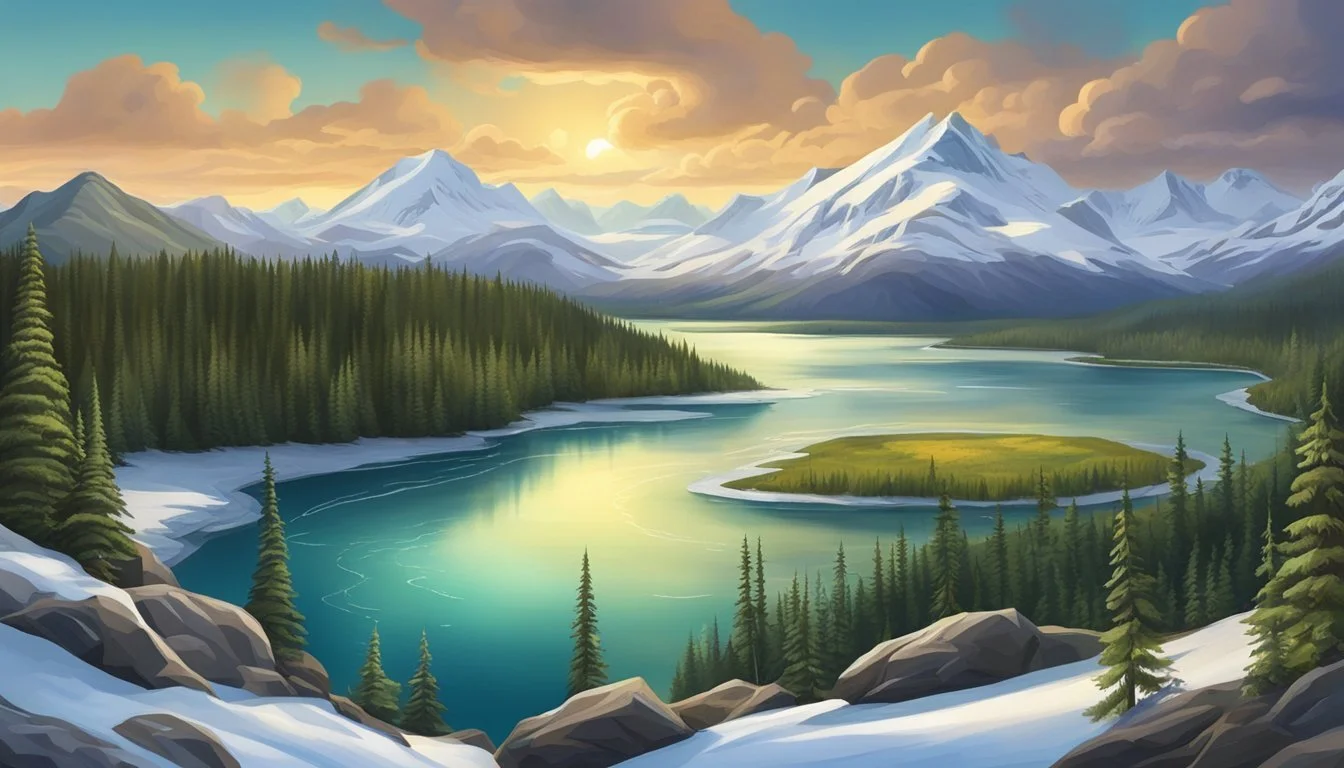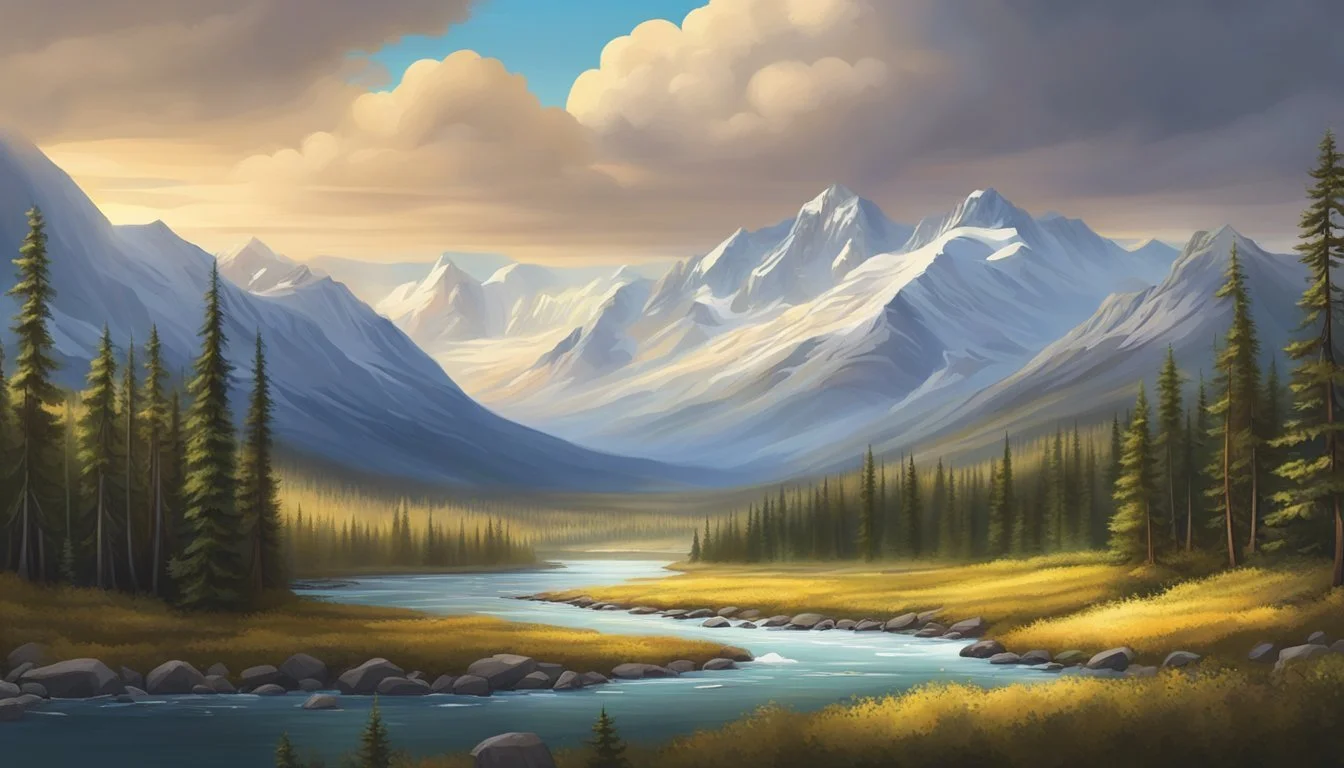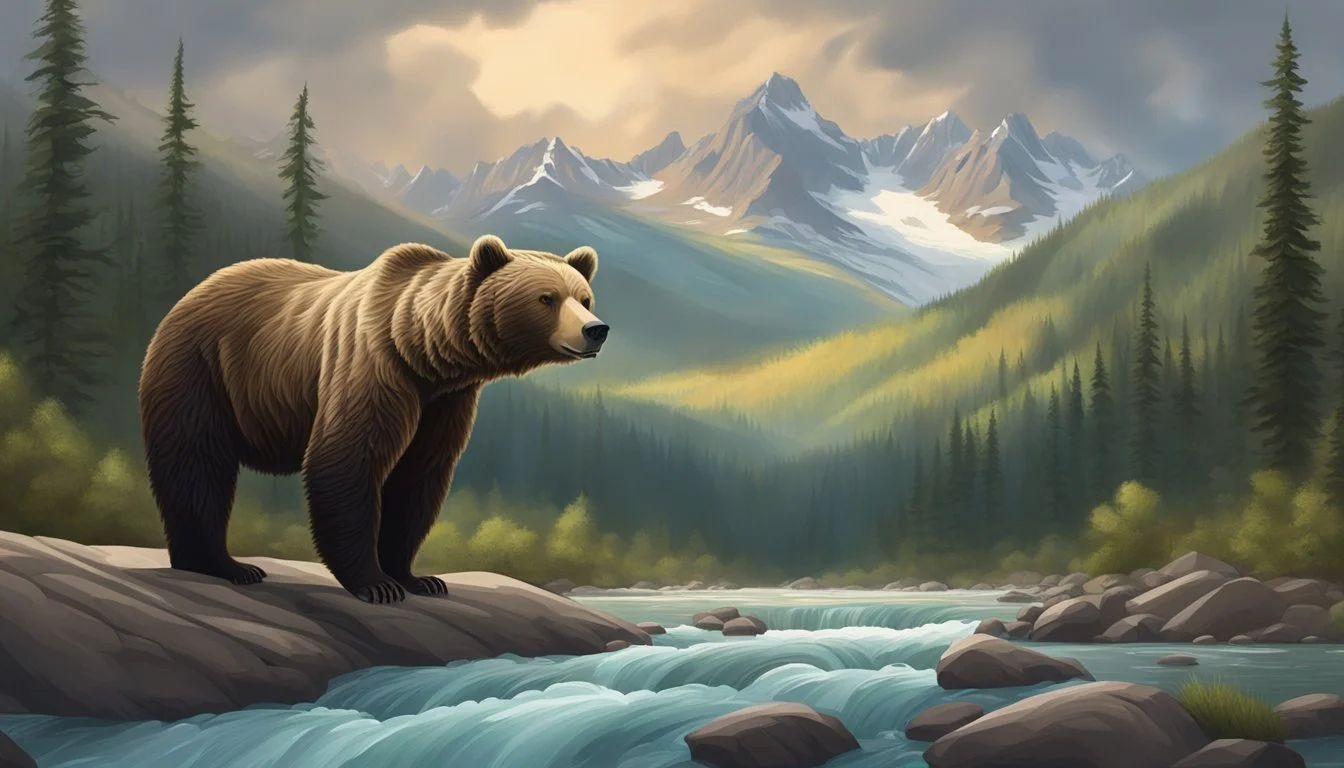8 Eye-Opening Documentaries About Alaska
Unveiling the Last Frontier's Hidden Wonders
Alaska, known as "The Last Frontier," captivates with its rugged wilderness, diverse wildlife, and rich cultural heritage. This vast state offers endless opportunities for exploration and discovery, drawing adventurers and nature enthusiasts from around the world.
Documentaries about Alaska provide viewers with an immersive experience of the state's natural wonders and unique way of life. From breathtaking landscapes to intimate portraits of local communities, these films offer a window into the challenges and triumphs of living in one of the most remote regions of North America. Through stunning visuals and compelling narratives, audiences gain a deeper appreciation for Alaska's beauty and complexity.
1) "Into the Wild" by Sean Penn
"Into the Wild" is a biographical adventure drama film directed by Sean Penn in 2007. The movie is based on Jon Krakauer's 1996 non-fiction book of the same name.
It tells the true story of Christopher McCandless, a young man who abandoned modern society to journey into the Alaskan wilderness. The film stars Emile Hirsch as McCandless, capturing his quest for a simpler life.
Penn's direction brings the breathtaking Alaskan landscape to life, showcasing its beauty and dangers. The cinematography immerses viewers in the rugged terrain McCandless navigates.
The film explores themes of self-discovery, isolation, and the human connection to nature. It depicts McCandless's struggles and triumphs as he attempts to live off the land.
"Into the Wild" received critical acclaim for its performances, direction, and visual storytelling. It offers a thought-provoking look at the allure and challenges of wilderness living.
2) "Grizzly Man" by Werner Herzog
Werner Herzog's documentary "Grizzly Man" offers a captivating look at the life and death of Timothy Treadwell. The film explores Treadwell's obsession with grizzly bears in Alaska's Katmai National Park.
Herzog combines Treadwell's own footage with interviews to paint a complex portrait of a man who lived among the bears for 13 summers. The documentary showcases stunning Alaskan wilderness and intimate bear encounters.
Treadwell's passionate yet controversial approach to wildlife conservation is examined throughout the film. His close interactions with the bears raised questions about the boundaries between humans and wild animals.
The documentary takes a tragic turn as it recounts Treadwell and his girlfriend's deaths in 2003, when they were killed by a grizzly bear. Herzog's narration provides thoughtful commentary on Treadwell's life and choices.
"Grizzly Man" offers viewers a unique perspective on Alaska's wilderness and the complex relationship between humans and nature. It serves as both a tribute to Treadwell's dedication and a cautionary tale about the dangers of wild animal encounters.
3) "Alaska: Spirit of the Wild" narrated by Charlton Heston
"Alaska: Spirit of the Wild" is an Academy Award-nominated documentary that showcases the untamed beauty of America's largest state. Released in 1997, this short film takes viewers on a captivating journey through Alaska's diverse landscapes and wildlife.
Narrated by the distinctive voice of Charlton Heston, the documentary offers a year-round look at Alaska's natural wonders. It captures the state's majestic scenery, from snow-capped mountains to vast tundra and icy glaciers.
The film highlights Alaska's rich biodiversity, featuring various animal species in their natural habitats. Viewers can observe bears, moose, wolves, and other wildlife as they navigate the challenging Alaskan environment.
"Alaska: Spirit of the Wild" employs stunning cinematography to bring the state's raw beauty to life. It showcases both the harsh realities of survival in the wilderness and the awe-inspiring moments of natural splendor.
This documentary serves as an immersive experience, allowing audiences to explore Alaska's remote corners without leaving their seats. It offers a glimpse into the state's unique ecosystem and the delicate balance of life in one of Earth's last great frontiers.
4) "The Alaska Triangle" on Travel Channel
"The Alaska Triangle" explores mysterious phenomena in a vast region of Alaska. This documentary series investigates unexplained disappearances, UFO sightings, and cryptid encounters.
The show features experts and eyewitnesses who share their experiences and theories. It delves into various locations within the Alaska Triangle, from remote wilderness areas to small towns.
Episodes cover topics like Bigfoot sightings, alien abductions, and vanishing aircraft. The series examines historical cases and recent events, attempting to uncover explanations for these strange occurrences.
"The Alaska Triangle" combines interviews, reenactments, and analysis of evidence. It presents different perspectives on the paranormal activity reported in the region.
The documentary showcases Alaska's rugged landscapes and isolated communities. It highlights how the state's unique geography and harsh conditions contribute to the mystery surrounding these events.
5) "Deadliest Catch" on Discovery Channel
"Deadliest Catch" has captivated audiences on the Discovery Channel for over a decade. The show follows crab fishermen as they brave the treacherous waters of the Bering Sea off the coast of Alaska.
Viewers get an up-close look at the dangerous and demanding profession of crab fishing. The series showcases the harsh weather conditions, massive waves, and long hours that fishermen endure to bring in their catch.
Each episode features different fishing vessels and their crews as they compete to land the most valuable hauls of Alaskan king crab and snow crab. The show highlights the strategies, techniques, and equipment used in this high-stakes industry.
"Deadliest Catch" has become one of Discovery Channel's most popular programs. It offers a raw and unfiltered glimpse into the lives of these hardworking fishermen and the risks they face on every voyage.
The series has earned critical acclaim and multiple Emmy Awards for its compelling storytelling and cinematography. It continues to educate viewers about the challenges and rewards of Alaska's commercial fishing industry.
6) "Alaskan Bush People" on Discovery Channel
"Alaskan Bush People" offers viewers a glimpse into the lives of the Brown family in the Alaskan wilderness. The reality series premiered on Discovery Channel in 2014 and has since gained a significant following.
The show follows Billy and Ami Brown, along with their seven children, as they navigate life off the grid. The family's compound is located on Chichagoff Island, 14 miles from Hoonah, Alaska.
Throughout the seasons, viewers witness the Browns' unique lifestyle and survival techniques. They face challenges ranging from harsh weather conditions to encounters with wildlife.
The series has evolved over time, particularly after the passing of patriarch Billy Brown in 2021. This event marked a turning point for the family and the show's direction.
Recent seasons have focused on the family's search for a new homestead in Haines, Alaska. The Browns continue to demonstrate their off-grid living skills and problem-solving abilities.
"Alaskan Bush People" blends elements of adventure, natural history, and family dynamics. It provides audiences with an intriguing look at an unconventional way of life in one of America's most remote regions.
7) "The Last Alaskans" on Animal Planet
"The Last Alaskans" offers viewers a glimpse into the lives of families living in isolation within Alaska's Arctic National Wildlife Refuge. The documentary series, which premiered on Animal Planet in 2015, follows four families as they navigate the challenges of a nomadic lifestyle in the Arctic wilderness.
The show captures the daily rituals and survival techniques of these resilient individuals. It showcases their interactions with the native wildlife and demonstrates how they maintain their way of life in one of the most remote areas of North America.
One family featured in the series is the Lewis family, whose experiences living in the refuge are documented throughout the show. The series also introduces Charlie Jagow, a young man who grew up in the refuge and aims to continue the traditional lifestyle of his predecessors.
"The Last Alaskans" provides an intimate look at the harsh realities and raw beauty of life in the Alaskan wilderness. It highlights the skills and determination required to thrive in such an unforgiving environment.
The documentary series has garnered praise for its authentic portrayal of life in the Arctic. It offers viewers a unique perspective on a vanishing way of life and the individuals who choose to preserve it.
8) "Wild Alaska" on BBC
"Wild Alaska" is a captivating BBC documentary series that showcases the rugged beauty and diverse wildlife of America's largest state. The show aired in 2017, offering viewers a glimpse into the extreme environments and unique ecosystems of Alaska.
The series explores various regions of the state, from the coastal areas to the interior wilderness. It captures the changing seasons and their impact on Alaska's flora and fauna, highlighting the adaptations of different species to survive in harsh conditions.
Viewers are treated to stunning cinematography that brings Alaska's landscapes to life. The documentary features breathtaking scenes of glaciers, mountains, and forests, as well as intimate moments with the state's iconic wildlife.
"Wild Alaska" delves into the lives of animals such as bears, wolves, and moose. It also showcases marine life, including whales and sea otters, along the state's extensive coastline.
The series provides insights into the challenges faced by Alaska's wildlife throughout the year. It depicts the struggle for survival during the harsh winter months and the abundance of life during the brief summer season.
Alaska's Unique Wildlife
Alaska's diverse ecosystems support an array of remarkable wildlife species. These animals have evolved specialized traits to thrive in harsh Arctic conditions and face ongoing conservation challenges.
Adaptations to Extreme Climates
Alaska's wildlife exhibits fascinating adaptations to survive in extreme cold. Polar bears have thick layers of blubber and dense fur for insulation. Their large, padded paws help distribute weight when walking on thin ice.
Caribou possess hollow hair that traps air for added warmth. Their wide, flat hooves act as natural snowshoes in winter and paddles for swimming across rivers.
Arctic foxes grow thick white winter coats for camouflage and insulation. Their compact bodies, short muzzles, and small rounded ears minimize heat loss in frigid temperatures.
Conservation Efforts
Alaska's wildlife faces threats from climate change, habitat loss, and human activity. Conservation groups work to protect critical habitats and migration routes.
The Arctic National Wildlife Refuge provides vital breeding grounds for numerous species. Ongoing debates surround oil drilling proposals in this ecologically sensitive area.
Marine mammal conservation efforts focus on protecting whales, seals, and sea lions from shipping impacts and overfishing. Strict fishing quotas help maintain sustainable populations of salmon and other important fish species.
Reintroduction programs aim to restore wood bison and muskoxen populations in parts of Alaska where they were previously extirpated. These initiatives require careful management and monitoring to ensure long-term success.
Cultural History of Alaska
Alaska's cultural heritage is rich and diverse, shaped by its Indigenous peoples and influenced by Russian colonization. These factors have created a unique tapestry of traditions, languages, and customs that continue to define the state today.
Indigenous Communities
Alaska's Indigenous peoples have inhabited the land for thousands of years. The state is home to 229 federally recognized tribes, including Athabascan, Yup'ik, Inupiaq, Aleut, Tlingit, Haida, and Tsimshian groups. Each has its own distinct culture, language, and traditions.
These communities developed sophisticated survival techniques adapted to Alaska's harsh environment. They crafted intricate tools, clothing, and artwork using local materials like animal skins, wood, and stone.
Many Indigenous Alaskans continue to practice traditional subsistence lifestyles, relying on hunting, fishing, and gathering. These practices are not only essential for survival but also central to cultural identity and spiritual beliefs.
Russian Influence
Russian explorers first reached Alaska in 1741, establishing settlements and fur trading posts. This period of Russian America lasted until 1867 when the United States purchased Alaska.
The Russian presence left a lasting impact on Alaskan culture. Orthodox Christianity spread among Indigenous communities, with many adopting Russian names and religious practices. Russian architectural styles can still be seen in historic buildings across the state.
Russian words entered local languages, and traditional Russian foods became part of Alaskan cuisine. The legacy of this era is particularly evident in places like Sitka, which served as the capital of Russian America.





